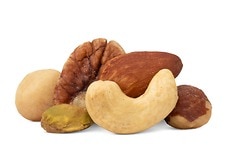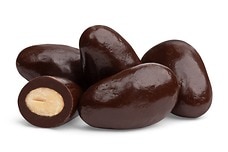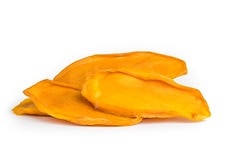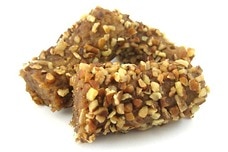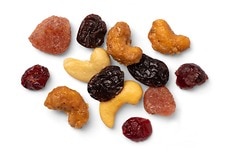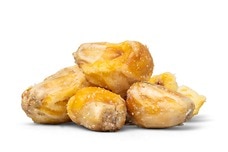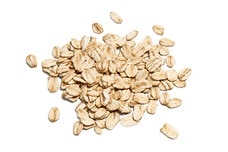Healthy Grocery List
When faced with an empty grocery cart and a busy grocery store, it is tempting to walk through the aisles and toss anything that looks edible into the cart -- or to simply turn around and order take out! Going into your trip to the market with a firm plan is the best way to make healthy choices and stay on budget.
Rules to Get Yourself on the Right Track
One of the biggest mistakes people make when grocery shopping is failing to plan ahead. A poorly planned grocery trip leaves you stuck with a refrigerator full of food that goes bad before you have a chance to eat it. Consider these grocery shopping rules to keep your budget and your body healthy:
- Always have a grocery list. Going to the store without a firm plan of what you want to buy is a recipe for wasteful or unhealthy purchases. Always make a grocery list before you set foot in the supermarket. Of course, you can make adjustments to your list as you go along, but a good list provides a guideline to the healthy foods you want to buy (Henneman, n.d.).
- Plan meals ahead of time. It takes a bit of time to get into the habit of meal planning, but this approach pays enormous dividends over time. Plan for one grocery trip and an online order each week. Over the weekend, make a list of meals that you would enjoy over the coming week. Then, buy enough food for those meals as well as any staples that are running low in your pantry.
- Challenge yourself. Each shopping trip try one new or different product to help challenge yourself to try foods outside of your comfort zone. For example if you always buy brown rice for a grain, switch it up and try a different whole grain like quinoa instead.
- Purchase in bulk as appropriate. Buying in bulk is a fantastic way to stay within a tight grocery budget. However, bulk purchases are best for non-perishable items or those with a relatively long shelf life. Save your bulk purchases only for foods that you frequently eat. A great way to utilize your bulk goods is by using storage jars or containers to store smaller amounts of bulk items. This can make it easier to get to in the cupboard.
Non-Perishable Items that Make Healthy Staple Foods
Perishable items such as fruits and vegetables are an essential part of a healthy eating plan, but non-perishables provide the backbone of many meals. Stock your shelves with healthy choices to ensure that you always have something nutritious to make. Consider the following items on a good healthy grocery list (Mississippi State University, n.d.):
- Extra virgin olive oil. Extra virgin olive oil contains healthy unsaturated fat that promotes cardiovascular health.
- Vinegar. Keeping a variety of vinegar on hand adds great flavor to recipes including: red wine vinegar, balsamic vinegar, to apple cider vinegar. Enjoy mixing your own dressing with extra virgin olive oil and balsamic vinegar for a quick alternative to processed dressings.
- Sea salt and black pepper. Sprinkle sea salt on a dish at the end of cooking instead of using during cooking to minimize added sodium. Black pepper is a wonderful way to add flavor to a dish without sodium.
- Natural peanut butter or almond butter. Natural peanut butter and almond butter are great for a quick, protein-filled snack. Celery sticks filled with nut butter and topped with dried fruit like raisins or tart cherries are just one example of the collations these nut butters can help create!
- Dried herbs. A varied selection of herbs and spices makes your meals more versatile. The same chicken and vegetables meal could go from Cajun to Italian to Middle Eastern depending on the spices you use.
- Whole wheat flour. Substituting whole wheat flour for white flour is a great way of adding healthy whole grains to your diet. For baking try whole wheat pastry flour; and, for a lighter wheat taste, try white wheat flour.
- Whole grains (e.g., quinoa, barley, brown rice, oats). Speaking of whole grains, the intact variety of this categorical staple provides a hearty, fiber-rich base for many meals. Eating whole grains every day lowers your cardiovascular risk and promotes weight loss (Whole Grains Council, n.d.).
- Canned or dried beans. Beans are high in fiber and make a plant-based source of protein for your meals.
Choose Healthy Perishable Foods
Be aware of quantity and quality when purchasing perishable foods, as you do not want good food to go to waste. When planning your meals, make note of the fruits and vegetables that are in season now. Not only is this a more environmentally conscious way to eat, but seasonal foods also tend to be more flavorful and nutrient-rich.

- Fresh fruits and vegetables. Purchase fruits and vegetables from across the color spectrum. This increases the range of vitamins, minerals, and antioxidants you receive from the foods (Garden-Robinson, 2011). Opt for frozen vegetables and fruits that work well to add to smoothies or that can be served as a quick side dish to add to your dinner.
- Eggs. Eggs are a complete protein, meaning that they have all of the amino acids needed by our bodies.
- Whole grain bread. The goal is to ensure that at least half of the grains you consume are whole grains. Whole grain bread is a way to work in whole grains into your eating routine. Switch it up to keep your taste buds interested and try: Buckwheat, whole wheat, or sprouted whole grain breads (e.g. Ezekiel bread), which are healthier alternatives to white bread.
- Lowfat dairy products. Choose mostly reduced fat or nonfat dairy products to keep your saturated fat intake in check.
- Yogurt. Getting a daily dose of probiotics can help your gut health. These beneficial bacteria are found in yogurt and other cultured dairy products, including: Icelandic yogurt (Skyr), Greek yogurt, or kefir.
- Fish. Opt for fish rich in omega-3 fatty acids like salmon, mackerel, herring, tuna, and sardines that are linked to promoting heart health and reducing the risk for certain types of cancer (Simopoulos, 1991). The American Heart Association (2015) recommends having 3.5 ounces of fatty fish 2 times per week.
When making your meal plan and shopping for groceries, don’t forget about the need for snacks and desserts. For example, having nuts on hand provides a healthy snack when cravings strike. Making a trail mix with nuts and dried fruits gives you the nutrients you need to maintain your energy throughout the day. For dessert, look for healthy baking mixes that contain whole grains or reduced sugar to indulge your sweet tooth without compromising health.
Healthy Recipes
Knowing what you want to do with the foods you buy can help keep you focused and give you a feel for which foods you want to add to your diet. Try a few of these delicious dishes to discover the ingredients and foods that best suit your palate.
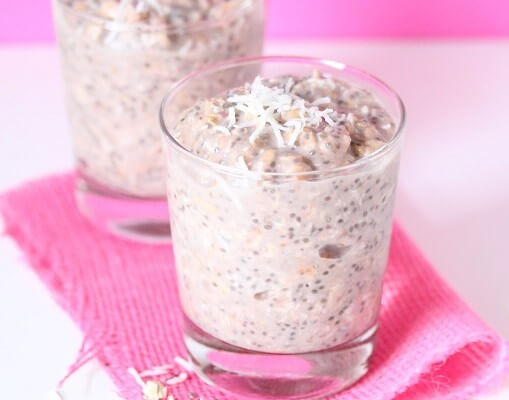
Strawberry and Banana Overnight Oats Recipe
This scrumptious breakfast option offers a blend of essential nutrients with a sweet savor that is sure to delight. Prepare a bowl the night before to enjoy a flavorful morning meal!
Ingredients: Gluten-free rolled oats, chia seeds, walnuts, unsweetened shredded coconut, fresh or frozen strawberries, ripe bananas, agave or maple syrup, almond milk.
Total Time: 15 minutes
| Yield: 10 - 12 servings
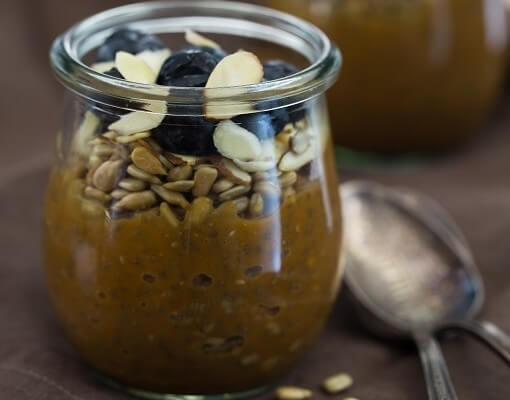
Pumpkin Chia Seed Pudding Recipe
Another great way to start your day, this simple pudding is easy to make, and it offers a rich source of needed nutrients to contribute to a balanced diet.
Ingredients: Milk, pumpkin puree, chia seeds, maple syrup, pumpkin spice, sunflower seeds, sliced almonds, fresh blueberries.
Total Time: 10 minutes
| Yield: 4 servings

Kale Quinoa Salad Recipe
A superb salad both for its tantalizing taste and its incredible nutritive value, this dish combines several staples of healthy eating into one scrumptious dish. Try this plate and combine the ingredients into other culinary combinations to find the ones that best suit your palate.
Ingredients: Quinoa, fresh baby kale, purple cabbage, carrots, fresh dill, boiled eggs, rice wine, extra virgin olive oil, black pepper.
Total Time: 25 minutes
| Yield: 8 servings
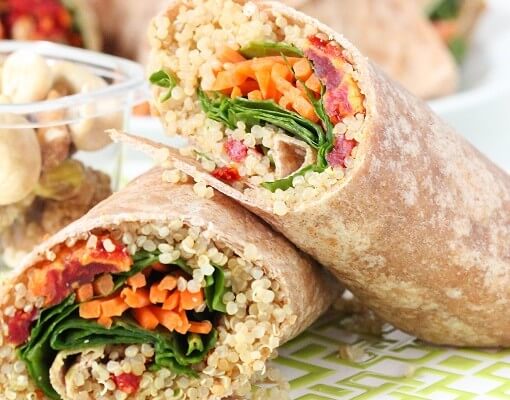
Quinoa Veggie Wrap Recipe {vegan}
Making good use of the superfood quinoa, these wraps combine the delicate grain with other favorite flavors in a familiar form that’s easy to eat and just as easy to make.
Ingredients: Tortilla wraps, quinoa, hummus, fresh spinach, sun-tomatoes, shredded carrots.
Total Time: 30 minutes
| Yield: 4 wraps
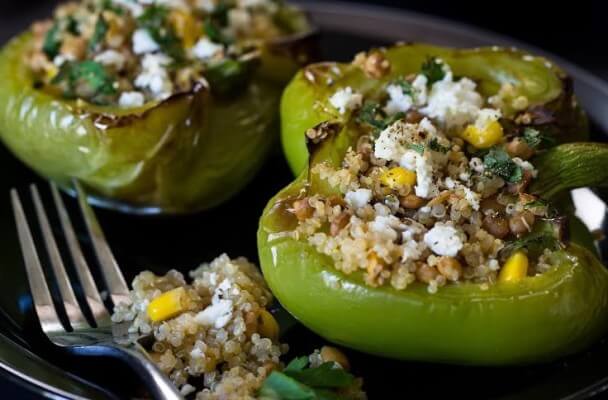
Quinoa Stuffed Peppers Recipe {gluten-free}
These peppers are a delectable dish that uses quinoa and other, more common ingredients to provide yet another impressively wholesome plate that samples out different savors.
Ingredients: Quinoa, green bell peppers, canned lentils, fresh spinach, feta cheese, frozen corn (thawed), salt, black pepper.
Total Time: 40 minutes
| Yield: 6 servings (8 half-peppers)
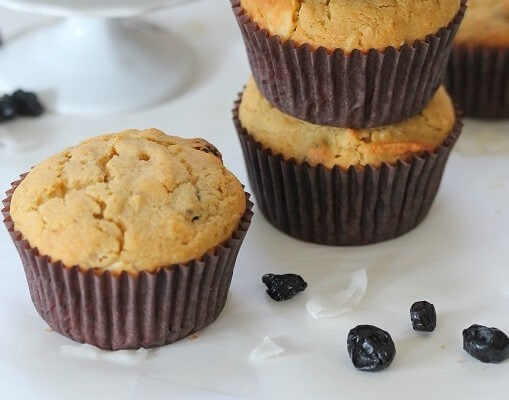
Blueberry Muffins Recipe
{gluten-free}
Enter the world of gluten-free baked goods with this relatively simple recipe to see if healthy baking fits your skills and pleases your taste buds. This recipe uses mostly common ingredients to give you a taste of healthier baking before you go off the deep end buying all manners of unique flours and oils.
Ingredients: Coconut flour, brown rice flour, gluten-free rolled oats, egg, olive oil, vanilla extract, almond milk, coconut chips, dried blueberries, unrefined sugar, baking powder, baking soda.
Total Time: 45 minutes
| Yield: 10 muffins
Snacks from Your Favorite Online Grocer
Rather than get your snacks at the grocery store, why not try our healthy collations? We also carry an abundance of grains,ingredients, and nuts (of course!) to support a healthy lifestyle, so try the products that pique your interest and that you might actually use by getting them today at Nuts.com!
Healthy Eating
- Healthy Snacks
- Healthy Highlights
- 5 Uses for Cacao Powder
- 5 Ways to Eat Farro
- 6 Best Gluten-Free Foods
- Alcohol and the Body
- Almond Flour Recipes
- Anti-Aging Superfoods
- Beat the Afternoon Slump
- Benefits of a Plant-Based Diet
- Benefits of Baobab
- Benefits of Cashews
- Benefits of Coconut Oil for Hair
- Benefits of Coconuts
- Benefits of Dates
- Benefits of Fenugreek
- Benefits of Garcinia Cambogia
- Benefits of Goji Berries
- Benefits of Kale Chips
- Benefits of Monk Fruit Sweetener
- Benefits of Peanuts
- Benefits of Pecans
- Benefits of Pistachios
- Benefits of Pumpkin Seeds
- Benefits of Spelt Flour
- Benefits of Steel Cut Oats
- Benefits of Sunflower Seeds
- Benefits of Tiger Nuts
- Benefits of Turmeric
- Benefits of Walnuts
- Benefits of Wheatgrass
- Best Food Fads
- Cacao vs Cocoa
- Caffeine-Free Energy Foods
- Chocolate That's Good for You
- Diet vs. Exercise
- Fat Burning Foods
- Food Myths Debunked
- Foods for Bone Density
- Foods for Colon Health
- Foods for Healthy Hair
- Foods for Healthy Skin
- Foods to Help Sleep
- Foods to Reduce Stress
- Green Tea Benefits
- Healthy Baking Flours
- Heart Healthy Habits
- High Protein Health Risks
- How to Boost Your Metabolism
- How to Lose Weight While Aging
- How to Throw a Vegan BBQ
- Kaniwa vs Quinoa
- Little Health Foods
- Low-Carb: Fad or Friend?
- Making Healthier Desserts
- Mediterranean Diet Meal Plan
- Natural Beauty Products
- Nuts for Weight Loss
- Preparing Vegan Meals
- Preventing Muscle Degeneration
- Rare Superfoods
- Reduce Sugar Intake
- Save Time By Going Vegan
- Smarter Snack Swaps
- Smoothie Ingredients
- Soy Protein vs Whey Protein
- Starting a Plant-Based Diet
- Steel Cut vs Rolled Oats
- Sugar Substitutes
- Vegan Proteins
- Vegan Substitutions for Fall Recipes
- Why Go Vegan
- Healthy Recipes
- Sports Nutrition
- Nutrition and Special Diets
- 21 Day Fix
- 5 Popular Diet Similarities
- Alkaline Diet
- Anti-Inflammatory Diet
- Calorie Counting
- Carb Cycling Diet
- Celiac Disease
- Cholesterol
- Clean Eating
- Crohn's Disease
- DASH Diet
- Detox Diet
- Diabetes
- Diabetes Diet
- Diet Pill Dangers
- Fat Burning Foods
- Gluten-free Diet
- Glycemic Index
- Heart Health
- High Blood Pressure Diet
- High Fiber Foods
- How to Eat Healthy
- How to Lower Blood Pressure
- Hypertension
- IBS Diet
- Ketogenic Diet
- Liquid Diet
- Low GI Foods
- Low-Carb Diet and Foods
- Low-Fat High-Carb Diet
- Mediterranean Diet
- Mediterranean Diet Foods
- Military Diet
- Nutrition Labels Explained
- Paleo Diet
- Raw Food Diet
- Superfoods
- Sustainable Weight Loss
- Thrive Diet
- Vegan Diet
- Vegetarian Diet
- Weight Loss Shakes
- Whole30
- Vitamins, Minerals & Nutrients

